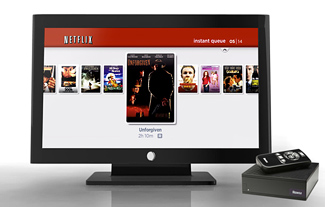Pulling the Plug on Pay Television

It's interesting how technological advancements—coupled with a deteriorating economy—can unexpectedly signal huge change in the habits of people. I sense that has begun to happen in the pay television industry.
A year ago, cable and satellite providers appeared to be at the top of the heap. Yes, they charged top dollar for their services, but TV-addicted Americans appeared to be willing to pay the high price.
Now, with the economy in a downward spiral, that may be changing. In Time Warner's recent $16 billion loss, the company's cable unit took a $14.8 billion write-down. The FCC just approved a separation of Time Warner from its cable unit.
WILL PAY TV SUFFER?
Time Warner Cable lost 126,000 lines of service in the most recent figures. Subscriptions fell in most categories, with the largest loss in basic video. This was compared to a profit of $327 million in the quarter a year ago.
Charter Communications, another cable provider, recently said it will file for Chapter 11 bankruptcy on or before April 1. The St. Louis-based company said it wants to reduce its debt by $8 billion as a result of the filing. It plans to continue to operate.
Comcast Corp., the nation's largest cable operator, is also troubled, with the company losing 233,000 basic subscribers in the fourth quarter. Chief Executive Brian Roberts and his fellow top executives will forgo a pay increase in 2009, the company said in a recent regulatory filing.
I don't pretend to know how badly these pay television companies are hurting. But I do hear anecdotal stories from my friends about the high cost of cable and satellite services. In this economy, many subscribers are looking for ways to save money and the pay television bill is under critical scrutiny.
ANOTHER OPTION
The discussion always seems to turn to Internet-delivered video. Word is out about many people who happily use it instead of pay television. Curiosity on the subject is running high.
What these folks learn—due to recent improvements in compression and the streaming quality of Internet video—is that they give up little while saving $100 or more a month. That's a powerful incentive.
Most news operations, like CNN, now have multiple video feeds on the Internet. The broadcast networks now offer their most current fare—with commercials—on Web sites like Hulu. And Netflix offers thousands of free movies and TV programs (without commercials) via a $99 Roku box or other device to anyone paying as little as $8.99 a month for their DVD service.
The key to good Internet video is to have a fast, reliable broadband connection in the home. With this, you'll get quality video—though not always high-definition—on a computer screen. Or with a set-top device such as the Roku box, a Blu-ray player, TiVo, or Xbox 360, one can get Internet-delivered programming on a conventional television set.
Internet TV is not for everyone. If you want all the channels all the time and are willing to pay for them, cable or satellite is still the best way to go. There are no buffering issues with cable, as with the Internet. And, if you want the best high-definition programming, stay with pay television.
However, not everyone is so addicted to massive amounts of television. If you mainly want to watch movies on demand, it's hard to beat Netflix, with or without the optional TV viewing box. Now, one can view many movies directly from a Web browser on a computer screen, or use the box to connect Netflix to a television.
There's a choice of over 12,000 movies and TV episodes and the Netflix collection is expanding faster than I can watch them. Best of all, I've never seen a commercial on Netflix. That commercial-free viewing alone makes Netflix my personal favorite. Apple's iTunes store is another choice if you watch a limited number of films or TV shows and want to select programming on an a la carte basis. Apple offers over 30,000 TV episodes from the four networks and 2,500 films including over 600 in high-definition video.

Roku set-top box Television shows in standard definition from the iTunes Store are $1.99 per episode, while HD programs are $2.99 per episode. Many series offer a season pass option, which allows subscribers to purchase entire seasons at a discounted price.
Also, with iTunes, portability is a major factor. The user can watch a TV show or movie anywhere and at anytime, be it on an iPod, computer screen, or television set using the Apple TV device. That's very convenient for those who move around a lot.
YOU HAVE A CHOICE
Third party applications can integrate these services. For example, Google's free "Understudy" application allows access to both Hulu and Netflix through Apple's Front Row interface on the Macintosh OS X platform. The user can subscribe to multiple feeds, and select a video via remote control to watch from them.
In 2008, the writer's strike caused many Americans to move to the Internet for video viewing. Now, in 2009, it may just be the economy that pushes more people away from expensive pay services.
The nice thing about these emerging alternatives to pay television is the range of choice they provide. Few people watch all the channels they must pay for in current subscription packages. Others don't want to see commercials, while others want to cut back on the amount of television in their lives. Some just want to save money.
Now, thanks to the Internet, that choice is possible.
Frank Beacham is a New York City-based writer. Visit his Web site atwww.frankbeacham.comand his blog atwww.beachamjournal.com.
Get the TV Tech Newsletter
The professional video industry's #1 source for news, trends and product and tech information. Sign up below.
Frank Beacham is an independent writer based in New York.

